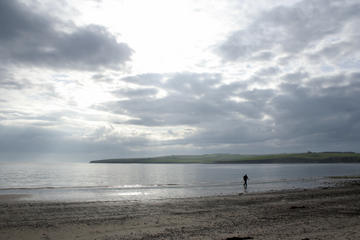Scapa Flow
TIME : 2016/2/22 13:55:12

Scapa Flow
In the Orkney Islands between the North Sea and North Atlantic Ocean, Scapa Flow is one of the great natural harbors of the world. Used since Viking times, Scapa Flow saw its fair share of bloodshed in WWI and WWII, when the harbor served as the naval base for the British Grand Fleet. You can learn more about the naval history of these sheltered waters at the Scapa Flow Information Centre and Museum on the isle of Hoy. In this converted naval pumphouse, you’ll learn more about the Royal Oak disaster, when a German U-boat torpedoed HMS Royal Oak in 1939, killing over 800 men. You can also see wartime photo collections and read the personal stories and sailors’ letters home, making for a touching visit. Dotted around the island are many bunkers and emplacements as well as Lyness cemetery, which is covered in thousands of graves, many simply reading “Unknown Soldier.” While looking out at the quiet waters, try to imagine this spot as the scene of the “Grand Scuttle.” This was on June 21, 1919, when more than 50 German warships were sunk at the orders of their own Rear Admiral so that the boats wouldn’t be captured by the British in the post-WWI peacetime negotiations.
Practical Info
Since Houton is a two-minute walk from Lyness pier, you can take the 40-minute ferry from here to get to Scapa Flow. Entrance to the museum is free, and there’s an onsite gift store and cafe. The site is open Monday through Friday from 9 a.m. to 4:30 p.m., with extended Saturday openings from March to October and extended Sunday openings between May and September. The museum is closed in winter.
